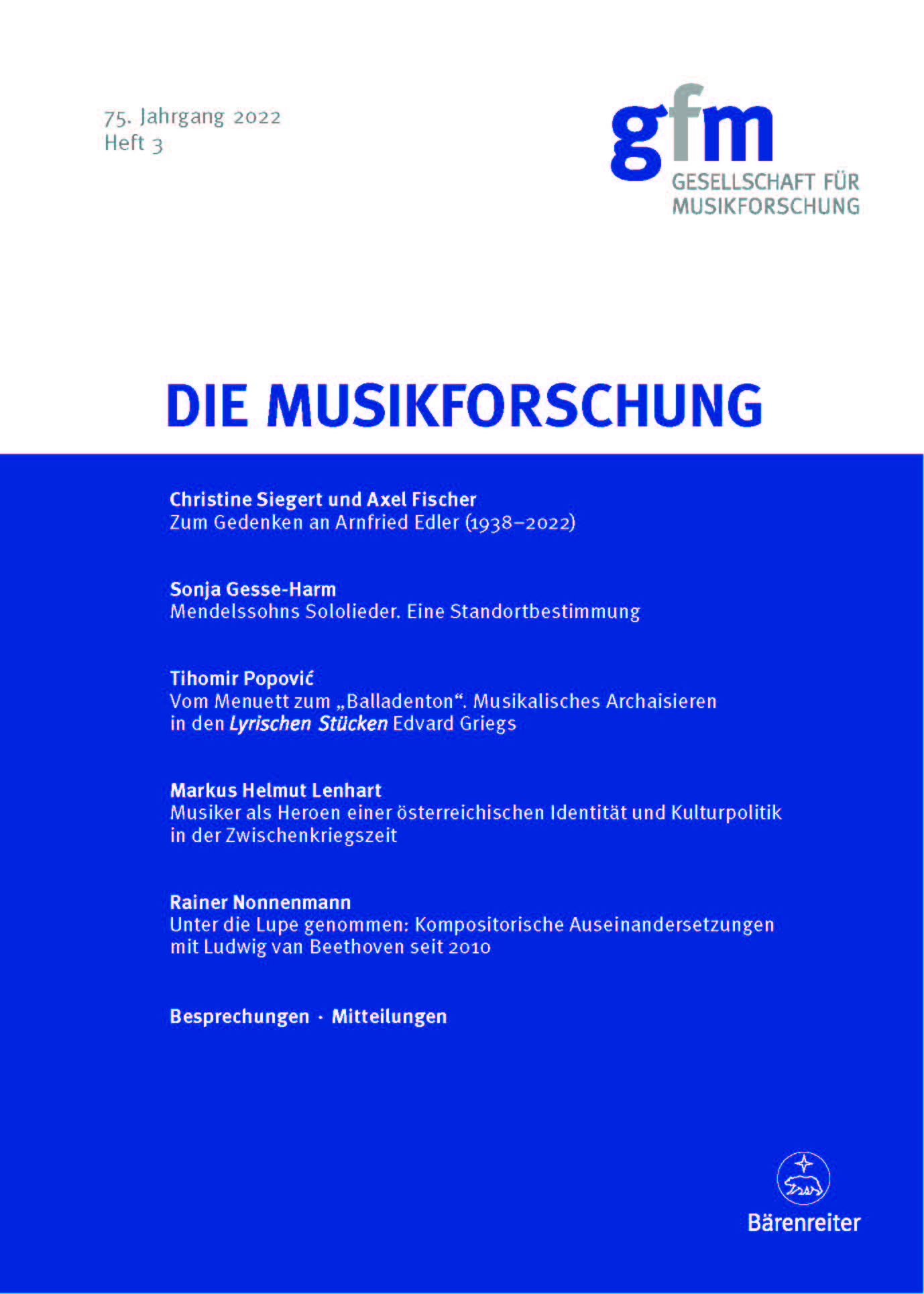Vom Menuett zum „Balladenton“
Musikalisches Archaisieren in den "Lyrischen Stücken" Edvard Griegs
DOI:
https://doi.org/10.52412/mf.2022.H3.3057Abstract
The essay analyses techniques of musical archaism in two case studies, “Grandmother’s Minuet” (“Bestemors menuett”) op. 68, No. 2, and “Ballad” (“I balladetone”), op. 65, No. 5, from Edvard Grieg’s Lyric Pieces. Using the terminology of literary scholar Ingrid Leitner, who distinguishes between historicising and a-historising archaisms, the Minuet can be understood as an example of a historicising archaism with ironic elements. It contains compositional techniques specific to the period of music history referred to in the title: the Baroque. Typical rhythmical structures are found in the piece as well as compositional patterns of the period. Occasionally the archaism is interrupted by obvious elements of the musical language of Grieg’s own period. In the Ballad, the technique can be described as a-historicising archaicism: an archaicism not referring to a particular epoch, but rather creating a vague impression of antiquity, connected to Grieg’s notorious “Nordic Tone”.
The two types of archaism are discussed in the context of romantic literature, art, and architecture. When compared to a work such as the Holberg Suite, significant differences emerge: Whereas the Suite can be seen as a work of “primary joy” in and enthusiasm for the music of the Baroque period, the archaism in the Lyric Pieces is intertwined with the processes of romantic composing.






